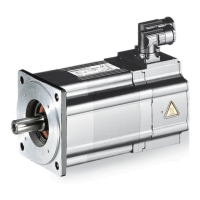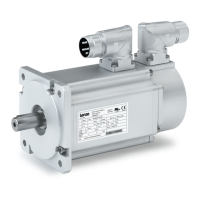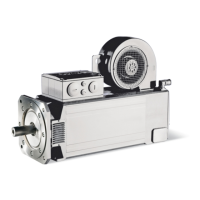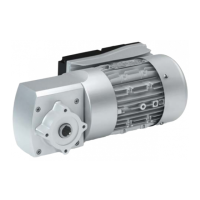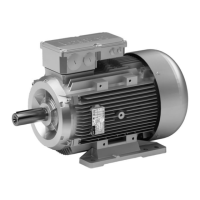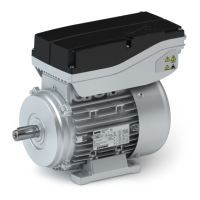Mechanical installation
Holding brake (option)
Permanent magnet holding brakes
5
24
Lenze • BA 33.0006 • 5.1
5.4.1 Permanent magnet holding brakes
These brakes are used as holding brakes and serve to hold the axes without backlash at
standstill or in the deenergised state.
Stop!
• Inherent to the design, the rated torque for permanent magnet
holding brakes is solely classified as holding torque at standstill. When
braking from full motor speed,
e.g. in the case of emergency stops, the braking torque is substantially
reduced.
• This holding brake is only designed for a limited number of emergency
stops. Utilisation as a working brake, e.g. to decelerate a load, is not
permissible.
When activating the brake, it must be ensured that the brake is released or engaged at
zero speed to avoid unnecessary and rapid wear of the brake.
When used solely as holding brakes, the brakes are virtually wear free on their
friction surfaces. If the max. permissible switching energy per emergency stop (see
catalogue) is not exceeded, at least 2000 emergency stop functions from a speed of
3000 rpm are possible.
W = ½ ⋅ J
tot
⋅ ω
2
W[J] Energy
J
tot
[kgm
2
] Total moment of inertia
[
1
/
s
] Angular velocity =2
n
/
60
, n= speed [rpm]
The holding torques specified in the catalogue only apply when the motor is at
standstill. In the case of a slipping brake, the dynamic braking torque always applies
which depends on the speed.
Note!
The permanent magnet holding brakes are maintenance-free and cannot
be adjusted. In the event of wear, e.g. by emergency stops, the brakes
must be replaced.
These brakes work on the basis of the closed-circuit principle, i.e. the brake is closed in
the deenergised state.
Brakes with a rated voltage of DC 24 V are designed for smoothed DC voltages with a
ripple of <1 %. It must be ensured that the connector on the motor side is supplied with
theminimumvoltageofDC24 V -10 %. If necessary, the voltagedrop in the cable should
also be considered. If the maximum voltage DC 24 V + 5 % is exceeded, the brake can
close again. Supplying the brake with bridge-rectified DC voltage (bridge rectifier
without additional smoothing) or a DC voltage with a ripple of >1 % can lead to a
malfunctioning of the brake or an increase in the engagement and disengagement
times.
Brakes with a rated voltage of DC 205 V are designed for bridge-rectified DC voltage, i.e.
for supply via a bridge rectifier from the 230 V mains (half-wave rectifiers are not
permissible). Supplying the brake with smoothed DC voltage can lead to
malfunctioning or an increase in the engagement and disengagement times. With
regardto the minimum andmaximum voltages,thesameconditionsapply asforbrakes
with 24 V, i.e. the permissible voltage tolerance is 205 V DC +5 %, -10 %.
